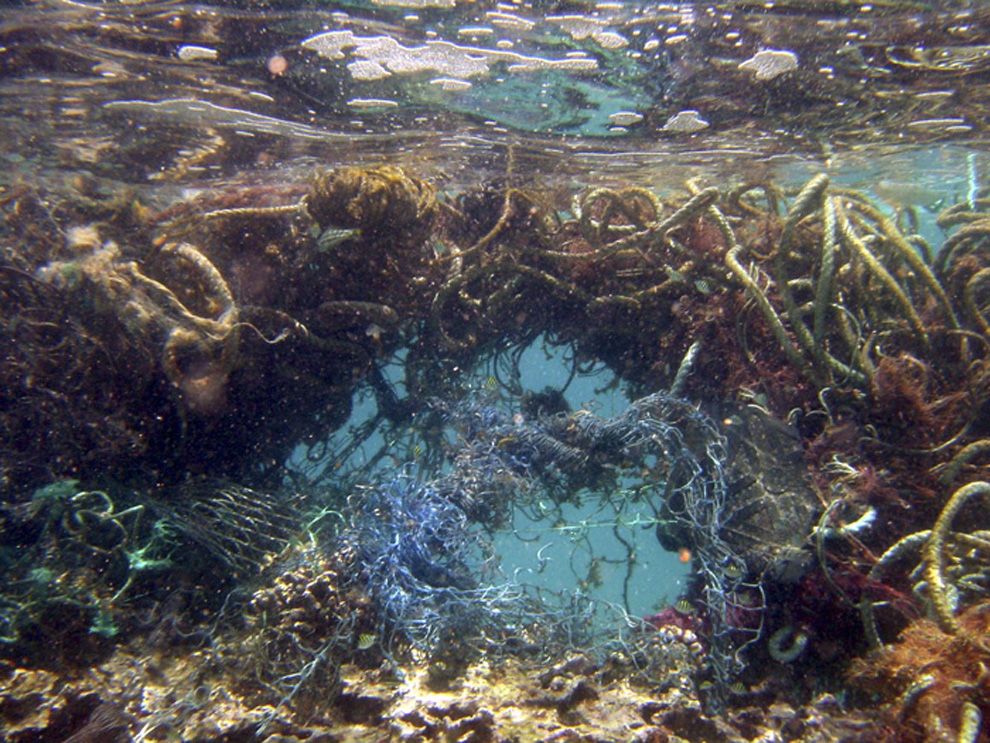
Imagine a floating mass of plastic twice the size of Texas spanning thousands of miles in the open ocean. Now realize that actually exists. Located between Hawaii and California and stretching all the way to Japan, the Great Pacific Garbage Patch is the largest floating ocean garbage site in the world, with plastic pieces outnumbering sea life six to one. And that’s not the only garbage disposal on the planet – there are four more gyres in the oceans where plastic pollution collects in large quantities.
That’s a scary thought, considering the danger plastic poses to not only aquatic life and ecosystems, but also to humans. Many plastics do not decompose; they just break down into tinier and tinier pieces. It’s like a domino effect. Every time we pollute the environment, it will come back with a multitude of effects and health problems.
For instance, fish consume these tiny plastic fibers and we consume fish. Every time we eat tuna or other types of seafood we are potentially exposed to toxic chemicals and high levels of mercury generated from coal-burning plants that release harmful pollutants into the air and water. Whether it’s harmful pollutants produced by coal, the number one cause of greenhouse gas emissions, or toxins in plastic that has made its way into bodies of water, these pollutants are directly linked to cancers, birth defects, immune system problems, and childhood development issues.
The Great Pacific Garbage Patch is almost entirely made up of these tiny plastic pieces, making the water look like a cloudy soup. This environmental hazard soup is intermixed with larger items, like fishing gear and shoes. This plastic composes 90 percent of all trash floating on the ocean’s surface, with about 46,000 plastic bits per square mile. The seafloor beneath is also badly polluted, with tons of garbage sinking to the bottom of the ocean. The ocean current acts like a highway, moving debris from one area of the ocean to another.
Now, the Great Pacific Garbage Patch is not the only place that is home to an abundance of plastic and tons of garbage. Like I said before, there are four garbage patches around the world, spanning from the Atlantic to Indian Oceans. And the worst part is, the amount of plastic and garbage is growing everyday. Not to mention some estimates say this pollution has killed over one million sea birds and 100,000 marine animals to date.
Whether through carelessness or pure neglect, we’ve let our oceans become a murky, polluted site of endless garbage. About 20 percent of this trash comes from boaters, offshore oilrigs, or large cargo ships. The rest of it comes from land-based activities, like litter picked up by tides, polluted runoff making its way from streets and yards into storm water drains that lead directly into bodies of water, or intentional garbage dumping.
And since the garbage patches are so far from any country’s coastline, a nation has yet to take responsibility and allocate funding to cleanup the ocean.
Thankfully, there is one organization that has taken matters into their own hands. The Ocean Cleanup plans on cleaning up the world’s oceans garbage patches, starting with the largest one in the Pacific Ocean. The team will deploy floating barriers attached to a seabed. The barriers would act as an artificial coastline, prompting the ocean to clean itself.
The prototype was already placed in the North Sea off the Dutch coast this past June. It will remain there for one year to test how the floating barrier will fare in extreme weather at sea, which will be similar to the type of conditions it will face once sent to the Great Pacific Garbage Patch by 2020.
It’s daunting to imagine that about eight million tons of plastic is thrown into the ocean every year. Luckily, something is being done to slowly get rid of all the trash in our oceans. Lets not make it worse by continuing to line our coastlines with garbage.
Photograph by Ray Boland, NOAA. Licensed under the Creative Commons Attribution 2.0 Generic license